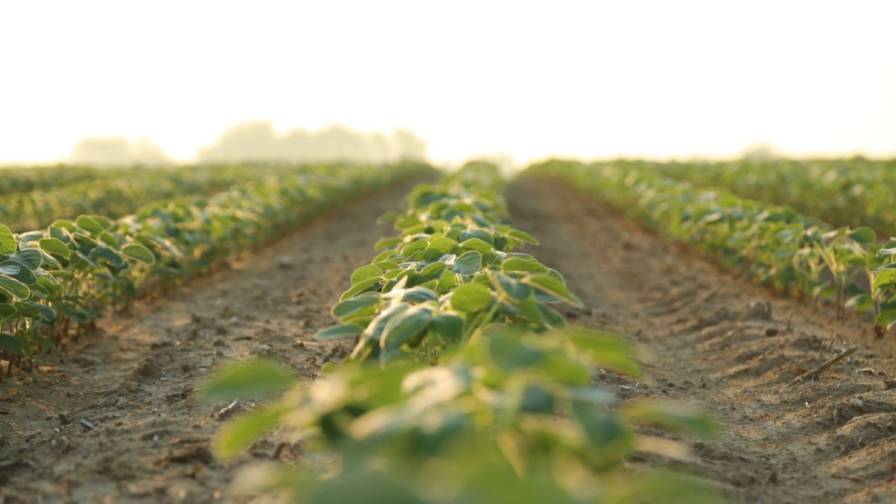Herbicide Resistance In Waterhemp Continues To Grow
Twenty-five years ago, waterhemp was virtually unknown to Illinois farmers. Today, the broadleaf weed blankets corn and soybean fields across the state and the Midwest, causing yield losses from 40% to 70%, according to an article on the University of Illinois’ College of Agricultural, Consumer, and Environmental Sciences Website.
As it marched through the region, waterhemp began to develop resistance to the most commonly used herbicides of the day. A relatively new type of resistance to a class of herbicides called HPPD-inhibitors was discovered in waterhemp populations in Illinois and Iowa in 2009. Now, thanks to a new University of Illinois study, we know that some of those populations are also resistant to alternative herbicides, making them even harder to kill.
“We looked at the response of a McLean County, Illinois, population to a number of HPPD-inhibitors and several herbicides of six other classes in the field and in the greenhouse,” says University of Illinois weed scientist Aaron Hager.
The researchers looked at whether it was possible to control plants with higher application rates of HPPD-inhibitors. But it turned out that, even with twice the label rate of some HPPD-inhibitors, the plants were able to recover after two weeks.
“When we did our first greenhouse work with this, no one had ever seen this kind of recovery before. When we looked at the plants seven days after spraying with HPPD-inhibitors, they were very injured. But, by 12-14 days, you could see that new, healthy tissue was emerging from the plants,” Hager recalls.
The researchers also evaluated the timing of post-emergence herbicide application.
“The idea was that perhaps a smaller plant size might be more sensitive than a larger plant,” Hager explains. “The level of injury of small, 1- to 2-inch plants was more than what we recorded on larger plants, but it was still less than an acceptable level of control. So, really, application timing is not going to be something that a farmer could use to overcome HPPD-resistance.”
When waterhemp was treated with herbicides from different classes, there was more bad news.
“We essentially confirmed that we can’t control this population with three classes of herbicides, the HPPD-inhibitors, the ALS-inhibitors, or the PSII-inhibitors. The weight of everything together points to the fact that this population is using resistance mechanisms that we haven’t seen before,” Hager says.
That said, the McLean County population is not the only waterhemp population that is resistant to multiple herbicide classes. In fact, Hager says that it’s rare to find a population that is resistant to only one class.
“What’s changed over time is the number of different classes to which it’s resistant. In 2000, we first found a population that had three-way resistance. Then we found one with four-way resistance. Those are individual plants with resistance to two, three, or four different classes of herbicides,” Hager notes.
There are some herbicides that are still effective, at least on specific populations. The McLean County population is sensitive to glyphosate, glufosinate (a GS-inhibitor), and multiple PPO-inhibitors, such as fomesafen.
Hager cautions that, with certain resistance mechanisms, the ability to predict which herbicides will be effective on any given population has been lost, and that chemical control alone is not the answer. If a farmer switches to a class of herbicides that works today, it is unlikely to work for very long before waterhemp develops resistance.
“Ultimately, we know how to win the battle,” Hager says. “If we attack waterhemp at the most vulnerable stage in its life cycle — the seed — we could beat this thing in five to seven years.”
Hager recommends that farmers let seeds germinate, then mechanically work the soil before planting the crop.
“You’ve just reduced your seedbank by millions, maybe hundreds of millions, and it didn’t cost you a dime,” Hager notes.
Farmers should repeat this strategy for multiple years until the seedbank is diminished. Another key is pulling out any stragglers before they go to seed.
“Let’s say it’s late July, and you see a few of these things popping up. Don’t let them go to seed,” Hager warns. “It’s not fun. At that time of year, it’s hot, sticky, and miserable, but the ultimate goal is to reduce the seedbank. You can’t let female plants go and make hundreds of thousands of seeds and then run a combine through at the end of the year. You’re going to reseed that whole field.”
According to Hager, no new herbicides are being developed that are likely to work on waterhemp long-term.
“We’ve got to get people off this idea that we’ve got a chemical solution for waterhemp, because in some cases, we don’t,” Hager adds.






